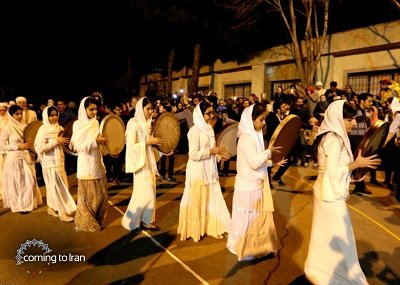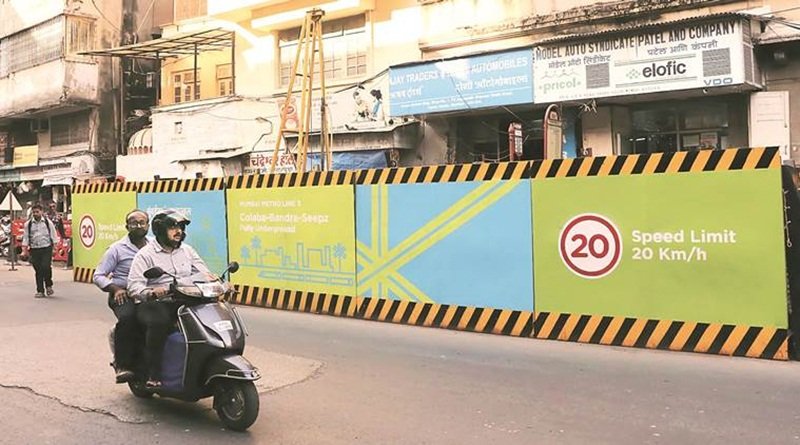Zoroastrian Festival of Sadeh
Sadeh meaning hundred, is a mid-winter feast that was celebrated with grandeur and magnificence in ancient Iran. Every year, on 30 January, thousands of Zoroastrians in Iran and other countries celebrates the religious feast of Jashn-e Sadeh by burning firewood in an open space to signify the coming of spring and as a symbolic token of the eternal fight with mischief. It was a festivity to honor fire and to defeat the forces of darkness, frost and cold. There is a cave in a mountain near Yazd, called Chak-Chak Fire Temple. Every year some special ceremonies are held in this place during the Sadeh Feast. It is believed that the last Zoroastrian princess took shelter there in 640 AD when the Muslims expanded their power to the east.
 Two different days were observed for its veneration. One celebration marked the hundred day before the religious No Ruz on the first day of the month Farvardin (religious No Ruz is different from spring No Ruz). The other one was the hundredth day after the gahambar of Ayathrima (one of the six feasts of obligation) held to be the beginning of winter. This day coincides with 10th of Bahman in present calendar. It is not clear why there are two Sadeh Festivals and why different regions have had different dates. Many of Zoroastrian holy days were and are celebrated twice; this is most likely caused by the calendar reform in the 3rd century AD. The occasion for the majority of Iranians has no religious significance and no specific rituals are involved other than torching bon fires at sunset and having a merry time and therefore keeping up with the ancient traditions when merriment was venerated and practiced.
Two different days were observed for its veneration. One celebration marked the hundred day before the religious No Ruz on the first day of the month Farvardin (religious No Ruz is different from spring No Ruz). The other one was the hundredth day after the gahambar of Ayathrima (one of the six feasts of obligation) held to be the beginning of winter. This day coincides with 10th of Bahman in present calendar. It is not clear why there are two Sadeh Festivals and why different regions have had different dates. Many of Zoroastrian holy days were and are celebrated twice; this is most likely caused by the calendar reform in the 3rd century AD. The occasion for the majority of Iranians has no religious significance and no specific rituals are involved other than torching bon fires at sunset and having a merry time and therefore keeping up with the ancient traditions when merriment was venerated and practiced.
With Zoroastrians the chief preparation for Sadeh is the gathering of wood the day before the festival. Teen-age boys accompanied by a few adult males will go to local mountains in order to gather camel’s thorn, a common desert shrub in Iran. For most it will be the first time they are away from their families. Wood is a scarce commodity in Iran and the occasion resembles a rite of passage, a noteworthy step for the boys on the way to manhood. The wood gathered would be taken to the local shrine and on their return home if it is their first time there will be a celebration for the boys at home with friends and relatives.
 Traditionally young boys went door to door and ask for wood and collect whatever they could get, from a broken spade-handle to logs and broken branches. While knocking on doors they would chant simple verses like “if you give a branch, god will grant your wish, if you don’t, god won’t favor your wish” and similar verses. All wood collected would be taken to the local shrine. Before the sunset all gathered outside the temple to torch the wood. Prayers were said with chants remembering the great ones of the faith and the deceased. In ancient times the fires were always set near water and temples. The great fire originally meant (like winter fires lit at other occasions) to help revive the declining sun, and bring back the warmth and light of summer. It was also designed to drive off the demons of frost and cold, which turned water to stone, and thus could kill the roots of plants beneath the earth. For this reasons the fire was lit near and even over water and by the shrine of Mihr, who was lord both of fire and the sun. Biruni in AD 1000 has very accurately described all these reasons for Sadeh Festival.
Traditionally young boys went door to door and ask for wood and collect whatever they could get, from a broken spade-handle to logs and broken branches. While knocking on doors they would chant simple verses like “if you give a branch, god will grant your wish, if you don’t, god won’t favor your wish” and similar verses. All wood collected would be taken to the local shrine. Before the sunset all gathered outside the temple to torch the wood. Prayers were said with chants remembering the great ones of the faith and the deceased. In ancient times the fires were always set near water and temples. The great fire originally meant (like winter fires lit at other occasions) to help revive the declining sun, and bring back the warmth and light of summer. It was also designed to drive off the demons of frost and cold, which turned water to stone, and thus could kill the roots of plants beneath the earth. For this reasons the fire was lit near and even over water and by the shrine of Mihr, who was lord both of fire and the sun. Biruni in AD 1000 has very accurately described all these reasons for Sadeh Festival.
The fire is kept burning all night. The day after, first thing in the morning, women would go to the fire and each one will carry a small portion back to their homes and new glowing fires are made from the ritually blessed fire. This is to spread the blessing of the Sadeh fire to every household in the neighborhood. Whatever that is left of the fire will be taken back to the shrine to be pilled in one container and will be kept at the temple. The festivities would normally go on for three days and the wood gathering by the boys door to door and blessing of the dead happens every night and evenings are spend eating and giving away ‘khairat’ (giving away as a good deed). Food prepared from slaughtered lamb and ‘ash e khairat’ are distributed amongst the less fortunate.





